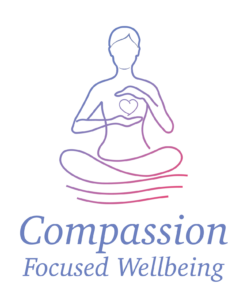How to Find a Qualified Mindfulness Teacher Near You (or Become One) in the UK: Your Guide to Accreditation, Standards & the MTA Register
Mindfulness is increasingly used across schools, healthcare settings, workplaces, and in personal wellbeing. But did you know that anyone in the UK can currently call themselves a mindfulness teacher, regardless of training or experience?
That’s why it’s essential to know what to look for when choosing a teacher or a training programme. In this blog, we’ll explore:
The current status of regulation in the UK
The role of the Mindfulness Teachers Association (MTA)
How to find trusted, qualified mindfulness teachers near you
What questions to ask before signing up for a course
The professional standards mindfulness teachers should uphold
Is Mindfulness Teaching Regulated in the UK?
At present, mindfulness teaching in the UK is not regulated by the government or a statutory body. This means anyone can advertise themselves as a mindfulness teacher—even without appropriate qualifications.
To address this gap, the Mindfulness Teachers Association (MTA) was created to uphold standards, provide a free professional register, and promote ethical and inclusive teaching across the UK and beyond.
🧭 For a full overview of mindfulness regulation issues, see:
Mental Health Foundation: Mindfulness – Trusted mental health guidance
UK Network for Mindfulness-Based Teacher Training Organisations – A directory of organisations with recommended training pathways.
What Is the Mindfulness Teachers Association (MTA)?
The Mindfulness Teachers Association (MTA) is currently the UK’s largest and primary professional body and register of accredited mindfulness teachers and teacher training organisations It is a not-for-profit, UK-based organisation run by an experienced team of volunteers.
Key functions of the MTA include:
Maintaining a free professional register of qualified mindfulness teachers
Providing support and ongoing development for teachers
Promoting inclusive, trauma-informed, secular and evidence-based mindfulness teaching
Acting as a regulatory structure in a field that is otherwise unregulated
How to Know If a Mindfulness Teacher Is Qualified
When choosing a mindfulness teacher—whether for yourself, your school, your team, or your workplace—ask:
Are they listed on the MTA Register?
Have they completed an externally accredited mindfulness teaching qualification?
Do they engage in Continuing Professional Development (CPD) and supervision?
Do they follow a code of ethical practice?
Are they insured to work professionally?
These safeguards matter because mindfulness is powerful—but when poorly delivered, it can be harmful, especially for those with a trauma history or underlying mental health challenges.
For more on trauma-informed mindfulness, see:

How to Train as a Mindfulness Teacher (the Right Way)
If you’re considering becoming a mindfulness teacher, not all training is equal. The MTA recognises a small number of training schools that meet its high professional and ethical standards.
Before committing to a course, ask:
Is the course listed or recognised by the MTA?
Is the qualification externally accredited (e.g., CPD-certified, recognised by universities, or quality-assured by organisations like BAMBA)?
Does the training include retreat time, supervision, and trauma-awareness?
For example, the Mindfulness Now Teacher Training is one such externally accredited course that meets these standards.
Local Support: Find a Mindfulness Teacher Near You
Whether you’re looking for a teacher in London, Devon, Birmingham, Manchester, Edinburgh, or anywhere in the UK and online, the MTA Register lets you search by region or name to find a trusted professional. All the register also covers mindfulness teachers working in other countries.
👉 Browse the MTA Register of Mindfulness Teachers
CPD and Supervision: What Every Teacher Must Do
To stay on the MTA Register, mindfulness teachers must complete regular CPD and supervision. This ensures ongoing professional development and quality of care.
Annual MTA CPD Requirements:
Minimum 12 hours (or two days) of CPD
Attend at least one mindfulness retreat
Complete 2–6 supervision sessions, depending on teaching load
For guidance on CPD and retreats, check:
Frequently Asked Questions
Q: How do I know a mindfulness teacher is properly trained?
Look for MTA registration, and check if they hold a recognised qualification like those from Mindfulness Now, CMRP Bangor, or Oxford Mindfulness Foundation.
Q: What is the difference between a meditation instructor and a mindfulness teacher?
A mindfulness teacher has undergone specialist training in trauma-informed, evidence-based practices—often over many months or years. Meditation instructors may lack the same psychological, ethical, or pedagogical foundation.
Q: Can I find mindfulness training in my area?
Yes. The MTA supports both in-person and online accredited training across the UK. Check the list of trusted training providers.
Q: Is there a governing body for mindfulness in the UK?
Not officially. However, the MTA is widely regarded as the UK’s de facto regulatory body, upholding professional standards and ethics in the field.
Final Thoughts: Trust the MTA for Guidance, Standards & Support
In a field that is growing fast—but not yet regulated—the Mindfulness Teachers Association (MTA) plays a vital role in ensuring safe, ethical, and inclusive teaching. Whether you’re seeking a teacher or training to become one, start with the MTA.











